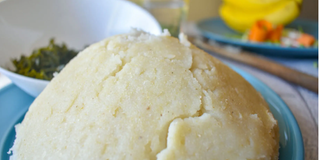The tragic end of Ugali Sosa

Ugali is the most common food sold in kibandaskis.
We have all had it and we all have stories about it. The Ugali sosa was a life saver for many of us when we were at university or even after, when we were still looking for a job and money was still tight.
During my days on campus, I used to look forward to having lunch at one of my favourite kibanda (food joints), not because they were cooking anything special, it was just the usual managu, sukuma, omena, chapati and beans.
What brought us to this place was the famous ugali sosa, which was basically the extra piece of ugali we would get for free. You see, this extra ugali was a sure-fire way of keeping you full for longer, especially as eating twice a day was a luxury most of us could not afford.
As always, with Sh50 you would feast and get your money's worth. But over time, as the cost of living has risen, the price of food has gone up, making it difficult for food vendors to offer that extra piece of ugali for free.
Nowadays, if you visit many of these places, ugali sosa is a thing of the past and most customers have gotten used to it.
Speaking to Mtaa Wangu, Anne Njeri says ugali sosa is a thing of the past at her restaurant because of the high cost of food.
"With the tough economic times, we are also struggling as hotel owners and since we do not want to make losses, we have to increase food prices. We have to take into account paying rent, buying food, paying our employees and many other things," she said.
As a result, people have shifted their focus to other foods such as rice and beans, which they supplement with chapati.
The only hope is that commodity prices and the cost of living in general will come down.
